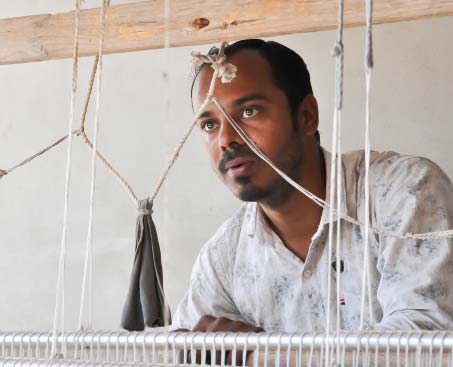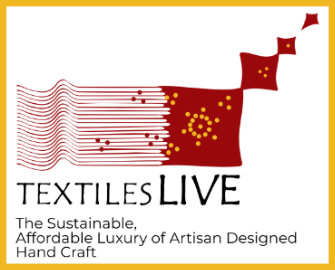
PRAKASH NARAN SIJU
When I hear about helping artisans, reviving craft, and intervention, questions that come to mind are who is defining the “problem?” For what reason do interventionists want to work with craft, and for what goal? If the answer is ‘because I like it,’ that is not enough. Because craft is made by artisans, and the quality of their lives will determine the sustainability of craft traditions.
My real question is, have you asked artisans what they want? And then we get to the question of HOW to ask (If you ask, ‘you want more money, right?’ You will get the answer you expect). And then we get to the dilemma of education: you don’t know what you don’t know.
Some time ago, I heard that someone assessing our design education program wrote, “If income after completion of the course is assumed to be a key measure of the impact of the course’s effectiveness (without considering aspects like confidence level, opportunity for young of the families to re-connect with craft etc.)…”
So here, I must intervene.
Assumption is usually risky. Would the National Institute of Design or the Rhode Island School of Design- or any educational program measure impact primarily by increased income of its graduates? Just asking.
Our institute’s stated goals, at least, are not in fact primarily quantitative. So our task then is to develop a meaningful means of assessing the success of education for artisans, in terms of our stated goals and, more important, in terms of goals for artisans and craft traditions defined by artisans who have graduated from the program.
In February 2018, we held a meeting of weaver design graduates to initiate this inquiry. I began by asking who felt they were successful. Almost everyone quickly raised his hand.
So, I asked, what is success? And what do you think contributes to success?
“Success is achieving goals; you need a goal. You need to know your capacity, what is good for you,” said Dayabhai.
“Success is decision making power,” Purshottambhai agreed. “You have to be clear and capable of decision making- and targeting your market,” he said.
“Success is using your creativity,” Prakashbbhai said.
“We now confidently know good design,” Rajeshbbhai added.
Dayabhai elaborated on this. “We now have our own concepts and identity,” he explained. “We know how to take feedback.”
To this Pachanbhai added, “Everyone’s work is unique. Besides knowing your USP, you have to be able to articulate it. Success is having a voice.”
Puroshottambhai echoed, “And success is being able to take responsibility.”
Strikingly, not one artisan spoke of success in terms of money.
“My early goal was money,” Dayabhai explained. “My goal was to educate my children. Now, it is to be my own person. My son told me not to weave. Now people come from all over the world to my house, so I have value. It’s not about just money.”
Namoribhai shared his experience. “You need design and business to get full value. New design at home has no value. You need to know when and where to sell. And business without design is no use. If you have both design and business you can answer the question: ‘Why is it expensive?’”
I asked if their goals had changed because of design and business education?
Prakashbhai laughed. “Before the course, we had no goals!” he said.
“At least I was interested in weaving. If a weaver is not interested in weaving, how could you interest him?”
“Previously there were no choices,” Dayabhai concluded. “Now, weavers who continue their tradition do it by choice. “What we can do is share our experience with the next generation. Now we can think of the benefit to our community.”
I asked them to define key problems in craft.
Dayabhai related participating in a meeting in Varanasi to launch the Indian government USTTAD (Upgrading the Skills and Training in Traditional Arts/ Crafts for Development) program. Weavers there said that 70% of the fault of falling markets for craft is customers asking for cheaper goods- and artisans complying. Short cuts and undercuts lead to the death of traditions, he said.
Namoribhai recounted that previously in trade fairs the sale of acrylic shawls was measured in tons. Nine tons of shawls used to sell, he said. And then the shawls were copied in power loom, and sales plummeted. So weavers were forced to make new products.
Next, I asked why they had decided to take the course?
Pavanbhai related that everyone seemed to be making the same thing, and sales were average. He didn’t get a job after doing a BA., and his father encouraged him to take up their traditional profession.
Prakashbhai shared that job work has limited scope in terms of money and creativity. Risks are necessary, he said. But when you don’t know the market, you are afraid. You have to face your own struggle.
Shantilalbhai said the he was interested by graduates’ success.
Niteshbhai narrated that he wanted to be known. I was not educated, he said, and here was an opportunity for me to get ahead (because formal education is not required).
I asked about their experience of design education.
“We didn’t know how much our lives would change,” Puroshottambhai said. “We learned the value of our work, learned to think of the market. We got courage. Now we are independent.”
“Now we can do our own business,” Dilipbhbai agreed.Ravjibhai shared that when he saw new materials it changed his work. He hadn’t seen anything but acrylic before. And after the course, he began to do his own work.
Ramjibhai had also just worked in acrylic. “The course was a turning point for me,” he said, “to become independent. We got a platform from the design course, and the Business and Management for Artisans (BMA) course taught us planning.”
Murjibhai agreed that the course gave him opportunities.
Pachanbbhai appreciated learning how to use inspiration- especially from traditional work. Prakashbhai appreciated practical learning. Dayabhai thought field trips were important, and felt he had learned a lot by participating in the Bhudodi to Bagalkot outreach program because it required application of learning in a real experience.
Prakashbhai felt that the value of the course was in teaching them to innovate within traditions. “Designers try to take us beyond tradition,” he said. “We refuse. We can change materials but not lose our identity.” He also felt that if you do simple work you will be copied and then will be priced out of the market.
Purshottambhai added, “We are artisans. We don’t weave yardage production.”
And about business and management education?
Dayabhai said that he realized that the key mistake artisans make is risk aversion. Artisans need to make investments. But taking risks is less risky when you have experience. He learned to think of the customer’s view, to understand clients’ needs. And he learned the importance of brand. Finally, he felt the class learned to take responsibility when they planned and produced their own exhibition.
Puroshottambhai said his key takeaway was that if you don’t value your work, neither will your customers.
What else would they like in the course?
Namoribhai felt that artisans need to learn to bridge the communication gap, which leads to slow response.
Niteshbhai pinpointed the eternal problem of costing and pricing. He would like to establish or correct wholesale/retail margins.
And finally, what would they like in their future?
Value for their products, everyone agreed, and good for the maximum number of people.
Purshottambhai hoped that artisans would share information with each other rather than compete. And he would like to encourage the less established artisans to take the course and get experience.
Those who had participated in Outreach programs felt that the artisan-to-artisan approach was most effective.
“First we have to understand our own tradition’s value,” Puroshottambhai concluded. “It is our responsibility to preserve our tradition. It was given to us and we have to value it.”

